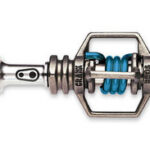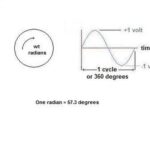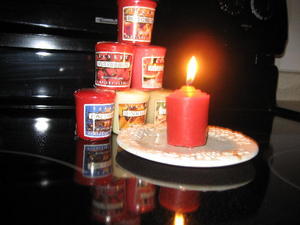Oh, the inductor for wah wah pedals. Many find this to be the key prime magical mojo ingredient to an amazing wah pedal. It’s definitely important, but is all the hype surrounding certain inductors really what it’s made out to be? Do all of the boutique wah builders really know what they’re doing? Or are they con-artists? I had the fortunate and unfortunate experience of getting to know many builders and their designs very well over my time in the “boutique” effects and amps world. I will refrain from criticizing any builders personally, as I don’t wish to harm their reputations (despite their attempts at times to slander me), but I will review certain products from an unbiased engineering and tonal stand point. The inductor is a key ingredient to the sound of a pedal, but I believe more importance is placed on certain inductors to help promote certain builder’s products as opposed to their being actual integrity to this “hype”.
The “Stack o Dimes” inductor
I know it as being used in the 80s in Thomas Organ wah pedals. This inductor was very hyped up in the 90s by one builder in particular and his friends. I’ve run into dozens of these in my effects investing, repairing, and building career and never liked one. They have a very thin tone and there’s not some “magical” way of “bringing out the real tone” of this inductor (as this guy told me over the phone when I brought it up). It was a very cheap inductor whose stock was completely bought out from the Thomas Organ data-base (which still exists), by one man. I have actually heard a few TDK inductors that sounded better than these. They don’t vary much in inductance, as opposed to some others.
The TDK inductor
Another frequently found inductor that has been bashed by many. These were used primarily in Sepulveda, CA built Thomas Organ wahs throughout the 80s. I’ve also have found them in several other types of wahs that are not as common as the Thomas Organ, but can’t remember the names of any of these right now. Tonally they range drastically. The inductance and resistance of these are what primarily make up how good they sound, so if you get one with a higher resistance and inductance, it will sound much better. Make sure it’s 480-550 (big range, 480 being treblier and 550 being fatter) on the inductance and 30+ for resistance. If it is, it should actually sound pretty sweet. Better than the stack o dimes.
The Original Fasel Inductor
Red Fasels, Green Fasels, White Fasels, etc. I’ve run into more of these than any other out of my own curiosity and interest in their colors. These are by far the coolest looking and most overrated of any. Do they sound great? Not really. They’re somewhat thin and lifeless. Usually wound to around 30 ohms resistance and 500mh, these things receive my award for most overrated inductor of all time. I’ve got three sitting in front of me right now complete disassembled right next to the current production yellow and red fasels. They’re absolutely nothing alike. An original fasel is more like the stack o dimes inductor in tone, and remarkably looks the exact same when disassembled. The original red fasel (and all of the others) has two small cores and a screw to adjust the inductance, not a torroidial core. I wonder about Mr. Dunlop sometimes, and who he hires.
The “Halo” Inductor
This is not an overrated inductor by any means. It’s simply recreated, but I encourage you to do the research. There’s one secret to these old inductors that sets them apart from the others, and it’s not the material. They are much more buoyant and will transform the sound of a wah pedal for the better. I’ve never heard another inductor current or vintage that sounded like these (except my latest model Galactic Inductors). However! They vary. Some of these will sound like any other boring inductor. The secret to their success will tell you which are which.
RMC Picture Wah Inductor
What a bunch of hype! I was first sent just the inductor by a former client that was excited to show me what it was like. Obviously not hand wound, the inductor was life-less…much like a stack o dimes inductor. Supposedly he “brings these into saturation” but the only difference between a Vox v847 circuit and picture wah is a capacitor, a resistor, the inductor, and a potentiometer. I was disappointed, but think that Teese has figured out a signature way of making his wahs sound good, that I’ve never seen another builder do. I will allow him to keep this a secret.
Area 51 Inductor
Area 51 does something that I’ve only seen other builders (Fulltone) do by accident. Dan (great guy by the way) intentionally makes his inductors very high in inductance. Therefore they have a very full fat sound that will muddy up a little in the heel down position, but sound nice, thick, and saturated coming up. He says that he frequently changes his designs, so I’m not sure if he still does this, but it’s a cool idea and I recommend to those that are looking for this sound.
Fulltone Clyde Inductor
I used these for my original pedals before I started making my own. They’re decent inductors if you get the right specifications. The advertisement that they’re all within a certain percentage tolerance is…not true. The last Fulltone Clyde inductor I purchased (you can still by them from a buddy of his that has an amp shop) measured above 700mh. The difference between this and 500mh (what they’re advertised as) is HUGE. Unfortunately this sounds very dark and muddy. I couldn’t help but find several of his inductors measuring this way. Have you ever read reviews of these that said they were very dark and full? This is why.
Current Dunlop Standard
Underrated. Get one that’s valued around 500mh with 30 ohms resistance or more and you’ll be more happy than an original stack o dimes! Unfortunately these give the Fulltone inductors a run for their money in unreliability (in terms of their values).
Original “Tin Can” inductor
There’s really nothing that special about these. The problem I found was that they almost always had too low inductance (which can be fixed by tuning the wah with the “sweep” capacitor). This will give it a very thin or piercing sound. It’s a common problem with the Halo, but this was rampant in every single one of these I ran into. I go to play with less of these than any other and just got a chance to play around with a few thanks to a client that wanted me to repair and modify his vintage wahs (with my huge collection of original vintage wah components from my wah graveyard).
Buy with caution, there’s a lot of crooked hype from the…”old guy squad” as I’ve personally dubbed them. The boutique field has a very popular, yet ruthless clique of builders and “engineers” that hates competition and teams up to destroy anything that competes with them. From my experience reading their…bullshit and speaking with them, a lot made their living from helping each other lie! It seems like a very common thing in that industry though. As I was told by one of the major distributors for effects pedals when starting off, “You gotta lie, cheat, and steal to make it in this business” (I did not end up doing business with him and he later sought me out but was appalled by my refusal to do business with him).
There’s many honest builders as well that make incredibly good products, so just purchase with caution.Enjoy!





